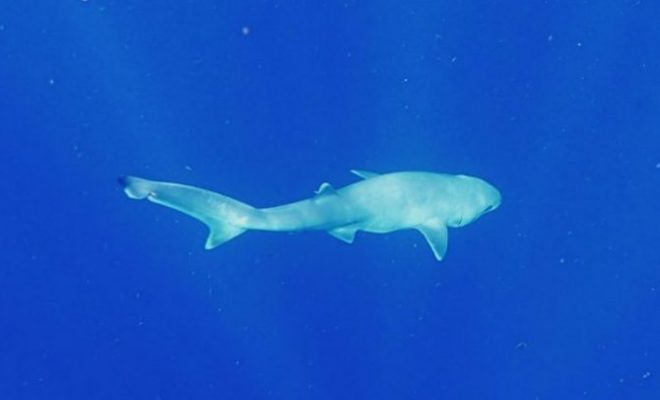A new species of sixgill shark has been identified by a team of scientists based at the Florida Institute of Technology.
Scientists have managed to decode 10,000 years’ worth of insect history from one five-meter-long core of sediment found at the bottom of a forest lake close to Quebec, Canada. The detritus contained the preserved remains of swarms of a moth species called the spruce budworm (Choristoneura), which is one of the most problematic pests in North American forests, reaping destruction in sometimes decades-long outbreaks every 30 to 40 years.
After five years of extracting, analyzing, and counting moth scales in the sediment layers, the team at the Québec University have published their findings in the journal Frontiers in Ecology and Evolution. They hope this research will open up a plethora of new information on the frequency and scale of past and future epidemics, as well as how they relate to climate change.
“Our analysis revealed peaks of moth scales that corresponded to known periods of insect outbreak. This means we can work out when these epidemics occurred before records began,” Lionel Navarro, joint-lead author, explained in a statement.
“This new method will be of enormous help to future research in areas as wide as ecology and evolution, biodiversity conservation, climate change and forestry.”
The study authors explained that moth remains work well as paleoindicators because they are high in number, easily identifiable, and extremely well-preserved. The technique could be adopted in other environments using different species of moths and butterflies (Lepidoptera), of which there are estimated to be almost half a million species worldwide. Only 160,000 are currently known.
“[The moth remains are] comparable to the fossil pollen and charcoal markers in sediments, which revolutionized prehistoric research to provide information on plants, climate and forest fires going back thousands of years,” said joint-lead author Miguel Montoro Girona, who is based the Swedish University of Agricultural Sciences, Umeå, Sweden.
“Our new method can be applied to many ecosystems where moths and butterflies have a marked influence on the landscape.”
The new technique could also have important uses when it comes predicting the effect global warming will have on insect outbreaks.
“Understanding our past ecosystems is essential to predicting the future. Based on climate-change predictions, insect outbreaks will be more frequent, with higher severity,” the climate authors write.
“Our new technique can help us understand how moths and butterflies react to different climatic scenarios and environmental changes, so we can predict their response to climate change, as well as their vulnerability and extinction risk.”
As for the spruce budworm, the scientists hope this research will help forecast and manage future epidemics.















